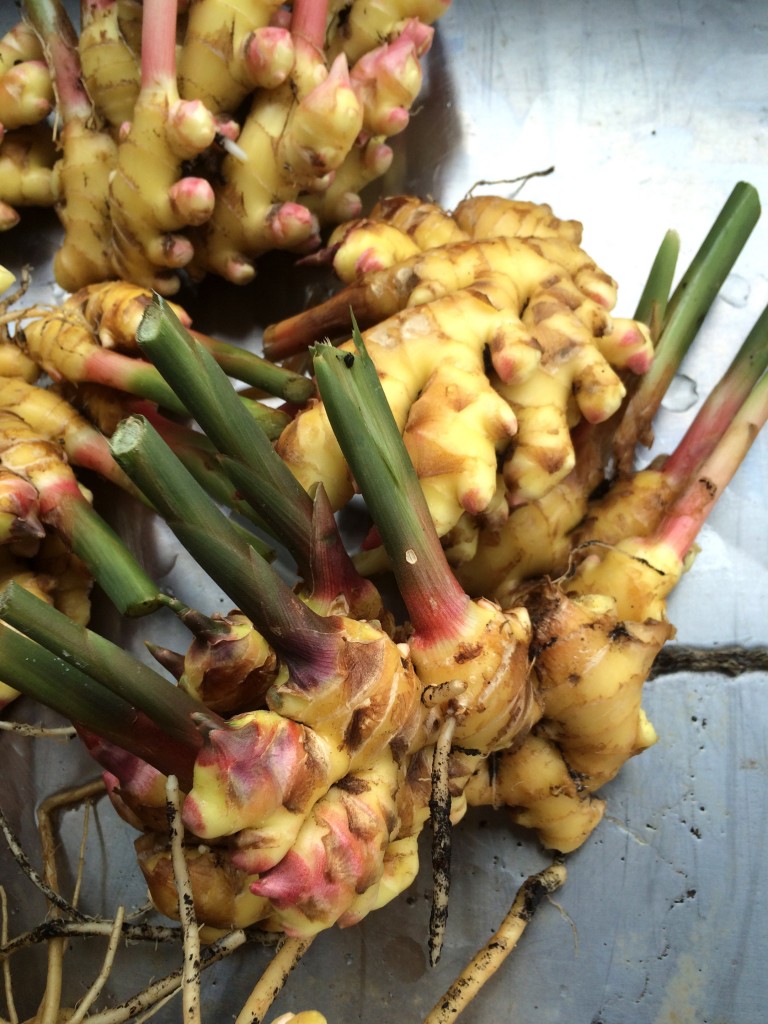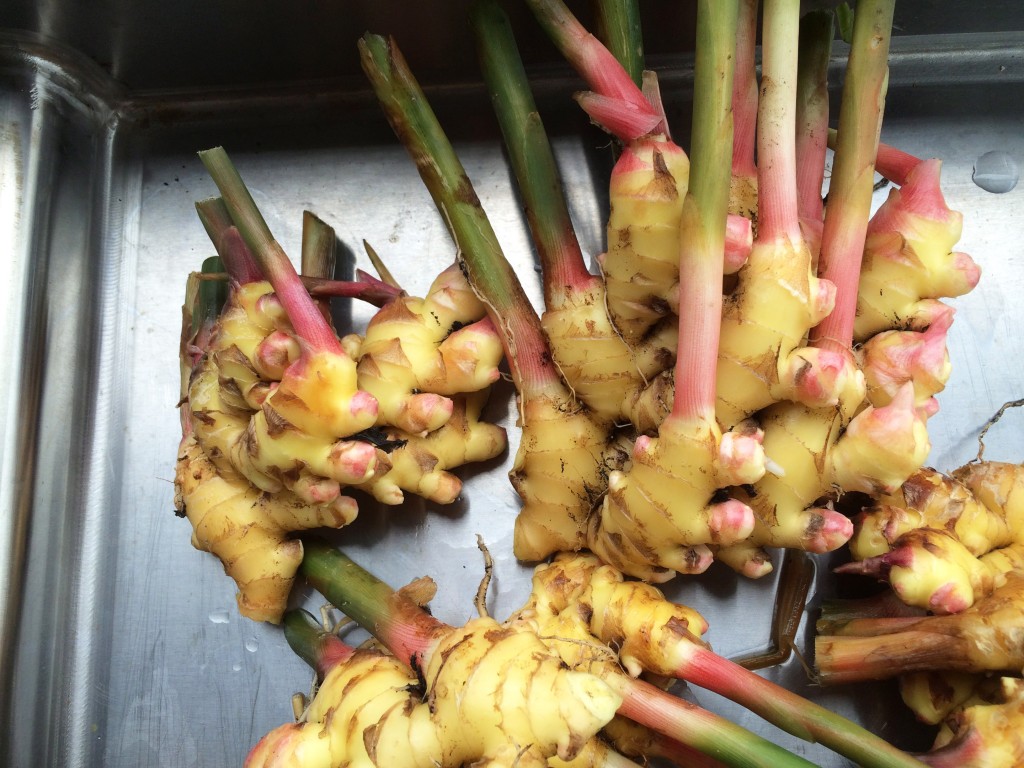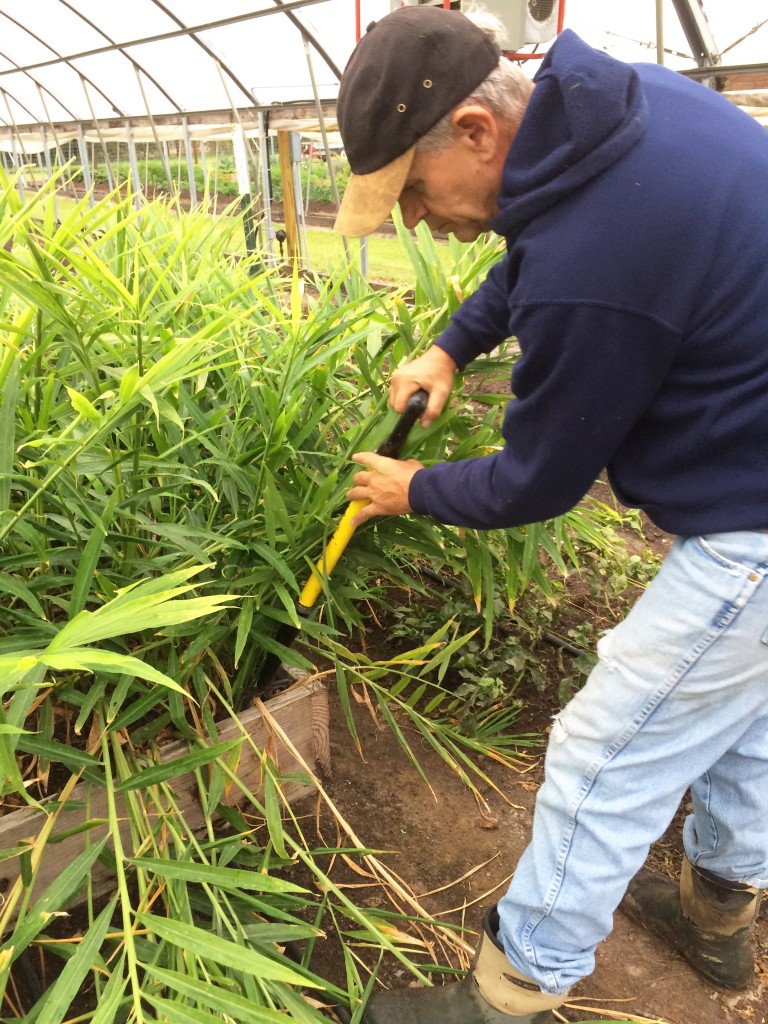By Hans Hansen
This covers a few details I missed in our discussion (presentation at Blackwood) yesterday about storing and using stored baby ginger. Keep in mind that baby ginger is quite different, more delicate/tender and fruit/vegetable-like, than the ginger most of us are familiar with:
Ginger rhizomes should be washed and air dried (good air circulation, no exposure to direct sun) after harvest. Proper drying is important. After it is completely dry, ginger can be stored many different ways depending upon what’s to be done with it.
One storage technique used to extend the fresh quality of refrigerated baby ginger is to shrink wrap it before storing. Shrink wrapping can extend the freshness of refrigerated baby ginger by several months (34-45 degrees F).
Baby Ginger has tender bright pink bud scales on the rhizomes that will turn purple and harden over time. Refrigeration will accelerate this color change. Refrigeration is still an okay way to store ginger but there are some details to understand about different temps and what the ginger will be used for.
Freshness is key to baby ginger. Harvest as soon as possible before using or taking it to market. Ginger with the top left on can make an eye-catching display item though, because of its value, it’s probably wise to leave most of the top-on ginger tucked away in storage. As with carrot, beets and other root crops, leaving the top on does leave it more vulnerable to deterioration. As with top-on carrots, beets, the value of top-on produce is proportionally higher than it’s bulk counterpart, to compensate for the special handling and potential loss of a more storage sensitive product. Btw, as with carrot, beets and turnips, the top can be used as a flavoring tea, smoothie or juice ingredient, though the flavor is much milder.
When presenting it from refrigerated storage, let it sit at about 60-65F for an hour or two before placing on a market display or before a delivering to a customer (chef, CSA parcel). This is likely happen in transit anyway, if packing it into a cooler without or with a small amount of ice (on a hot day). In other words, fresh presentation is best when the rhizomes are not too cold or too hot. As with some of the some less durable market produce items, place a few out for display, keep the rest tucked away in a cooler. Fresh rhizomes packed in moistened (but not soggy) peat moss placed near (but not on) ice should keep them in good shape for a multi-day market cycle.
Refrigerated storage – ginger will get rubbery in the refrigerator over a few days. It is a great way to store it for the end user: chefs, consumers, grower who will be doing value-added options like candying and pickling.
Freezing – rhizomes can be stored in the freezer for use later, but not for pickling or candying. If a recipe calls for fresh grated ginger, take the rhizome out of the freezer, grate as needed, then return the ginger to the freezer. Freeze precut, pre-weighed pieces into individual packets and sell to retail customers for “fresh” frozen Baby Ginger. I should remain in good salable condition until the next baby ginger harvest comes in.



